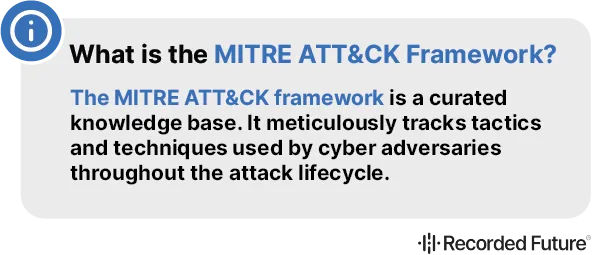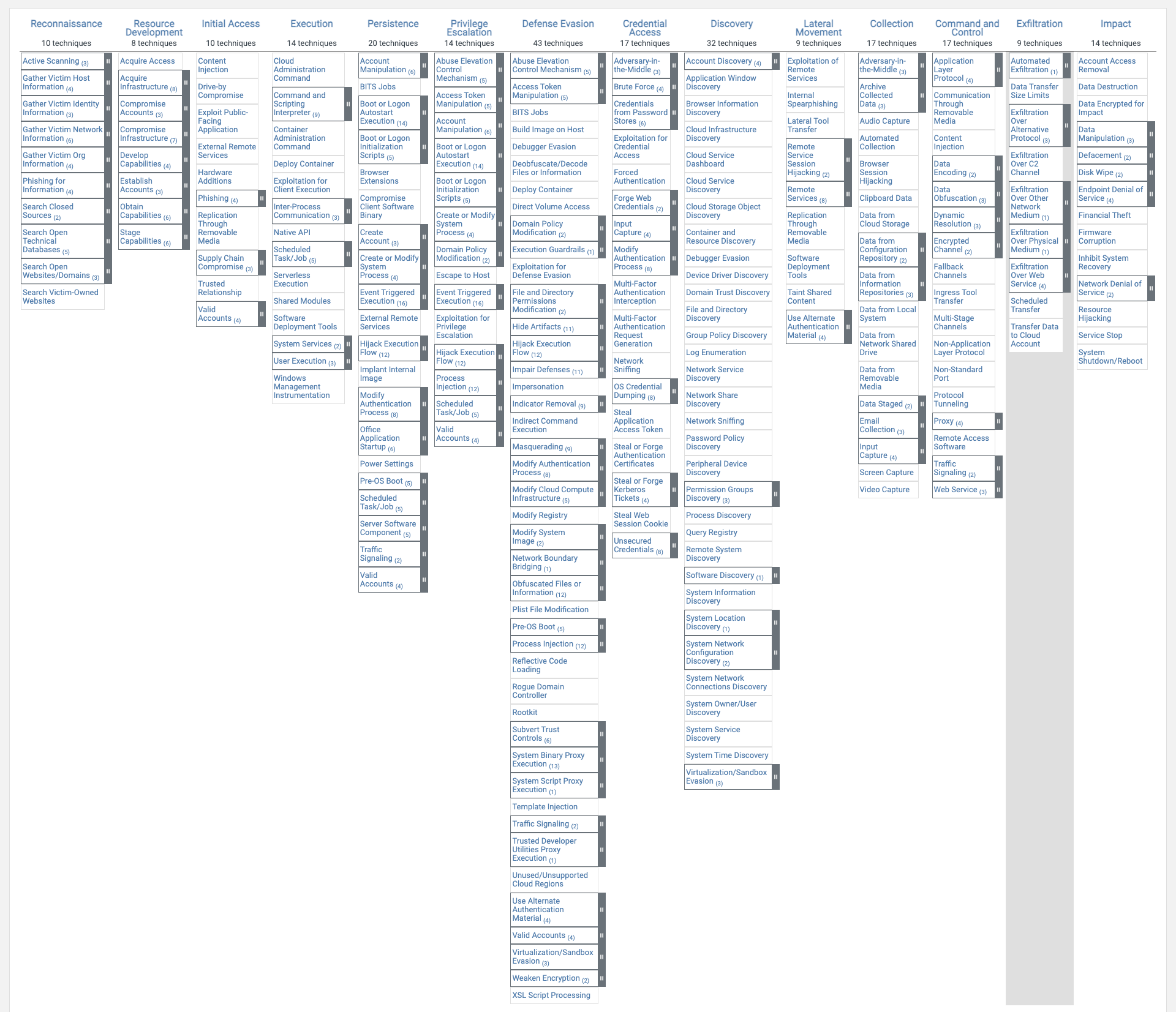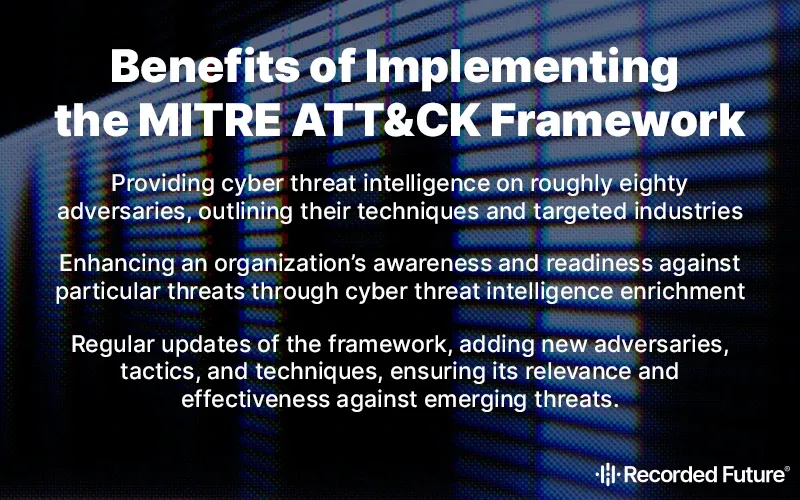MITRE ATT&CK Framework
What exactly is the MITRE ATT&CK framework, and how does it help combat cyber threats? The Mitre Attack Framework catalogs threats and guides defensive strategies, essential for resilience in the digital age. This article unpacks its components, usage, and benefits, offering clarity for professionals seeking to fortify their cyber defenses.
Key Takeaways
- The MITRE ATT&CK is a comprehensive knowledge base for cybersecurity, detailing adversary tactics, techniques, and procedures (TTPs) to improve threat detection and organizational defense.
- The framework categorizes cyber adversary behavior into a matrix structure of 14 tactics and numerous techniques and subtechniques that provide detailed insights into cyberattacks, with regular updates reflecting the evolving threat landscape.
- Adoption of the MITRE ATT&CK framework aids in threat hunting, red and blue team exercises, identifying security gaps, and provides a common language for cybersecurity professionals, despite challenges in integration, automation, and the need for specialized training.
What is the MITRE ATT&CK Framework?
The MITRE ATT&CK framework is a curated knowledge base. It meticulously tracks tactics and techniques used by cyber adversaries throughout the attack lifecycle. Developed by MITRE, a not-for-profit security research organization, the ATT&CK framework aims to provide a comprehensive list of known adversary tactics and techniques used during a cyberattack.
The framework’s unique matrix categorizes a set of techniques under tactics, distinguishing the objectives of attacks from the methods used to achieve them. ATT&CK stands for Adversarial Tactics, Techniques, and Common Knowledge, a testament to its real-world observations and documentation-based approach.
In the words of CISA's Best Practices for MITRE ATT&CK Mapping document: “_MITRE ATT&CK® is a globally accessible knowledge base of adversary tactics and techniques derived from real-world observations_”. This phrase highlights MITRE ATT&CK as a pivotal resource in cybersecurity, offering actionable insights based on actual cyber threat encounters.

Origin and Evolution
Dating back to the Fort Meade Experiment in 2013, the ATT&CK framework was born out of MITRE’s efforts to bolster threat detection post-compromise. This was achieved by delving into adversary and defender behaviors, using telemetry and behavioral analysis as key tools.
Launched internally within MITRE in 2013, the ATT&CK framework was subsequently released to the public in 2015, bringing a new dimension to the field of cybersecurity by providing detailed insight into the tactics, techniques, and procedures used by cybercriminals.
Components of the Framework
The MITRE ATT&CK framework comprises three main components: tactics, techniques, and procedures (TTPs).
- Tactics represent the objectives that an adversary aims to achieve, essentially the ‘why’ of the attack.
- Techniques, on the other hand, are the specific methods adversaries use within a tactic to meet their objectives. These techniques can be further broken down into procedures that describe the exact step-by-step methods that adversaries use to execute specific techniques. This framework currently provides identification for 201 Techniques and 424 Sub-techniques.

Source: https://attack.mitre.org/
The Role of Tactics in the MITRE ATT&CK Framework
Within the MITRE ATT&CK framework, tactics serve as a representation of an adversary’s technical goals or objectives throughout an attack. The framework identifies 14 tactics in the Enterprise ATT&CK matrix, each representing a unique aspect of the adversary’s attack strategy.
These tactics range from Initial Access, where an adversary seeks to gain entry into a network, to Impact, where the adversary seeks to manipulate, interrupt, or destroy systems and data. Each tactic provides unique insights into the adversary’s objectives and methods, providing critical knowledge to enhance an organization’s security posture.
Techniques and Subtechniques: Understanding Adversarial Methods
As a supplement to the tactics, the MITRE ATT&CK framework offers an extensive list of techniques and subtechniques. Techniques describe specific ways adversaries attempt to reach their tactical objectives. Subtechniques further dissect these techniques into more specific actions, providing an even more detailed view of adversarial behavior.
As of the most recent update, the Enterprise matrix identifies 188 techniques and 379 subtechniques, reflecting the framework’s comprehensive nature and the complexity of adversarial methods.
Technique Examples
To illustrate the depth of the framework, let’s consider some technique examples. Techniques such as Credential Access involve methods like Brute Force and OS Credential Dumping. Initial Access Techniques encompass methods for network or system entry like phishing and exploitation of public-facing applications. Additionally, privilege escalation is another technique that can be considered within the framework.
The ‘Drive-by Compromise’ technique is an example of an Initial Access Technique, where an adversary sets up or compromises a website to exploit a visitor’s web browser and gain system access. These examples highlight the diverse methods adversaries employ to infiltrate networks and achieve their objectives, including targeting compromised systems.
Subtechnique Examples
Subtechniques offer a more granular representation of adversarial behavior. For instance, the Brute Force technique, categorized under Credential Access, is subdivided into subtechniques such as:
- Password Guessing
- Password Cracking
- Password Spraying
- Credential Stuffing
These subtechniques illustrate the diverse brute-force methods employed in adversary behavior, often incorporating defense evasion tactics.
Another example is the Spearphishing Attachment subtechnique under Phishing. This technique involves targeted emails containing malicious attachments like Word or Excel documents, deployed by threat groups including Sandworm Team, APT28, and APT29.
Procedures: Mapping Adversary Steps
Within the scope of the MITRE ATT&CK framework, procedures signify the specific implementations utilized by adversaries for techniques or subtechniques. This is different from subtechniques, which are categorized based on behavior. Identifying these specific procedures is essential as they illustrate the practical application of various techniques or sub-techniques used by an adversary.
Procedures are not featured directly in the matrices but are categorized under the ‘Procedure Examples’ section of technique pages. They can be accessed by clicking on specific techniques or sub-techniques within the MITRE ATT&CK matrix. Examples of procedures include adversaries like APT19 using watering hole attacks for drive-by compromises, and another adversary using PowerShell to inject into lsass.exe to dump credentials by scraping LSASS memory.
Comparing MITRE ATT&CK with Other Cybersecurity Frameworks
The MITRE ATT&CK framework sets itself apart from other cybersecurity frameworks, such as the Cyber Kill Chain, by uniquely emphasizing a matrix structure. This structure elucidates detailed tactics and techniques, presenting a stark contrast to the linear process model employed by the Cyber Kill Chain
Additionally, when compared to models like the Diamond Model of Intrusion Analysis, which focuses on the relationships between adversary, capability, infrastructure, and victim, ATT&CK provides a more granular view of attacker behavior.
Compared to NIST’s cybersecurity framework, which focuses on a risk management approach, MITRE ATT&CK provides a tactical and technical matrix catering to understanding and mitigating cyberattacks. The framework updates bi-annually to accurately reflect the evolving threat landscape, offering a more current framework than NIST, which updates less frequently and may lag behind emerging threats.
Practical Applications of the MITRE ATT&CK Framework
The practical applications of the MITRE ATT&CK framework go beyond mere theoretical knowledge. Using the framework, security teams engage in threat hunting, developing routines that are based on techniques commonly relevant to their respective industries. This approach, led by threat hunters, aids in tracking attacker behaviors pertinent to their sector. Similarly, red and blue teams utilize the framework to emulate attacker techniques, which is crucial for assessing security readiness and identifying areas needing better protection or improved strategies.
One of the primary applications of the framework is to identify security gaps by mapping current defenses against a comprehensive matrix of attack techniques, facilitating the efficient allocation of defensive resources for effective digital risk protection.
Tools and Resources
To further enhance the efficacy of the MITRE ATT&CK framework, several tools and resources are available. The MixMode platform offers an example of integration, mapping detections to MITRE ATT&CK tactics and techniques for enhanced threat visibility. Additionally, Next-Gen SIEM and extended detection and response (XDR) solutions are empowered by MITRE ATT&CK integration, facilitating better threat detection, response actions, and delivering actionable threat intelligence to administrators.
A crucial tool is the MITRE ATT&CK Navigator, widely used by security professionals to visualize and explore various tactics and techniques defined in the framework. By providing a common vocabulary, the framework streamlines communication among cybersecurity professionals regarding attack methods, enhancing the overall understanding of cyber threats.
Best Practices for Using the Framework
The effective use of the MITRE ATT&CK framework involves embracing best practices. It’s crucial to train security analysts on the ATT&CK matrices to improve their daily work and cyber crime investigations. Additionally, the framework should be included in security awareness training to bolster the workforce’s ability to recognize and report threats.
Improving threat detection and response includes automating detections for prevalent and high-impact ATT&CK techniques and integrating ATT&CK context into security alerts, investigations, and reporting. Furthermore, keeping the threat model up-to-date is a best practice, as it must evolve in line with the changing threat landscape and integrate continuously with Security Information and Event Management (SIEM) systems.
Benefits and Challenges of Implementing the MITRE ATT&CK Framework
Embracing the MITRE ATT&CK framework brings a myriad of benefits, including:
- Providing cyber threat intelligence on roughly eighty adversaries, outlining their techniques and targeted industries
- Enhancing an organization’s awareness and readiness against particular threats through cyber threat intelligence enrichment
- Regular updates of the framework, adding new adversaries, tactics, and techniques, ensuring its relevance and effectiveness against emerging threats.
Despite its benefits, implementing the framework presents challenges for industrial control systems. Interoperability issues may emerge when attempting to integrate the framework with diverse security products. Additionally, automating responses to security events highlighted by the framework can lead to excessive workloads for security teams.
Lastly, adoption of the MITRE ATT&CK framework requires substantial training and in-depth expertise, alongside a significant investment in resources, posing a challenge for some organizations.

Case Studies: MITRE ATT&CK in Action
Seeing the MITRE ATT&CK framework in action provides tangible evidence of its effectiveness.
Recorded Future's integration with the MITRE ATT&CK framework represents a significant leap in cybersecurity strategies. By mapping out threat intelligence against a catalog of known adversary behaviors, organizations can prioritize their defense mechanisms more effectively. This approach not only enables a deeper understanding of potential threats but also enhances the ability to preemptively counteract cyber attacks.
The synergy between Recorded Future's real-time intelligence and MITRE ATT&CK's comprehensive behavior catalog facilitates a dynamic and proactive security posture, crucial for defending against the ever-evolving landscape of cyber threats.
Frequently Asked Questions
What is the difference between NIST and MITRE Att&ck?
The main difference between NIST and MITRE ATT&CK is that MITRE ATT&CK offers a detailed taxonomy of adversary tactics and techniques, while NIST provides high-level guidelines for managing cybersecurity risks. The target audience also differs between the two.
What does MITRE stand for?
MITRE doesn't stand for anything, it was intentionally named to sound evocative without a specific meaning.
Is Mitre attack a threat model?
Yes, the MITRE ATT&CK framework is used for threat modeling to identify potential attack vectors and tactics used by threat actors, making it an important tool for organizations concerned with security.
What is MITRE Att&ck used for?
MITRE Att&ck is used by organizations for developing threat models, evaluating security tool efficacy, developing detection strategies, prioritizing security investments, and sharing threat and defense information between organizations. It is a comprehensive tool for enhancing cybersecurity.
What does ATT&CK in the MITRE ATT&CK framework stand for?
ATT&CK in the MITRE ATT&CK framework stands for Adversarial Tactics, Techniques, and Common Knowledge, used to classify threat behaviors and detect cyber intrusions.
Summary
In conclusion, the MITRE ATT&CK framework is an invaluable tool in the cybersecurity landscape. By providing a comprehensive knowledge base of adversary tactics and techniques, it empowers organizations to understand and counter cyber threats effectively. Despite the challenges, its practical applications in threat hunting, red and blue team exercises, and identifying security gaps make it a crucial part of any robust cybersecurity strategy. It’s not just about understanding the threats we face; it’s about taking proactive steps to defend against them.
Eager to integrate the MITRE ATT&CK framework into your cybersecurity arsenal?
Schedule a demo with us and explore how Recorded Future solutions can transform your defense strategy. Experience firsthand how targeted intelligence and proactive defense mechanisms can close security gaps and enhance your threat response. Let's redefine your cybersecurity posture together.

Esteban is a seasoned security researcher and IT professional with over 20 years of experience, specializing in hardening systems and networks, leading blue team operations, and conducting thorough attack surface analysis to bolster cybersecurity defenses. He's also a skilled marketing expert, specializing in content strategy, technical SEO, and conversion rate optimization. His career includes roles as Security Researcher and Head of Marketing at SecurityTrails, before joining the team at Recorded Future.
Related
